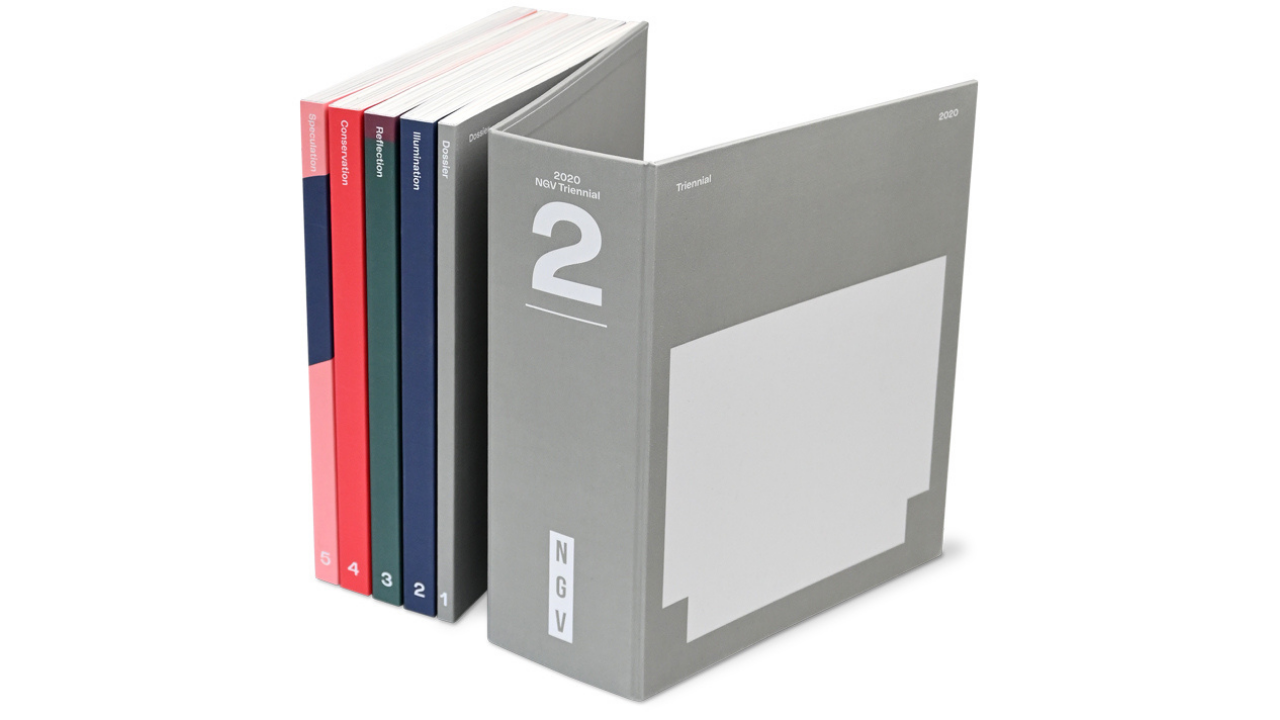
After reviewing hundreds of entries every year, the jury for AAM’s annual Museum Publications Design Competition awards only one publication with the Frances Smyth-Ravenel Prize for Excellence in Publication Design, recognizing it as the best submission overall.
This year, the winner is 2020 NGV Triennial, a publication of the National Gallery of Victoria in Melbourne, Australia, designed by Dirk Hiscock, Senior Graphic Designer at the National Gallery of Victoria.
We recently talked to Dirk to learn more about the concept behind his prizeworthy design: a five-volume set capturing the themes of the museum’s second triennial exhibition. See a full list of competition winners here.
What was the initial design concept, or what did you want the book design to convey?
The 2020 NGV Triennial exhibition was the second in the series, and brought contemporary art, design, and architecture into dialogue, offering a visually arresting and thought-provoking view of the world at the time.
I wanted the publication to respond to this provocation with an equally contemporary offering. The 2017 NGV Triennial publication acted as a jumping-off point for the 2020 iteration; I worked to design a progression that responded to the new exhibition yet also maintained a visual relationship with the earlier edition.
What were the key decisions that needed to be made in the execution of the design?
I retained three visual cues from the prior publication—motif, format, and paper stock. The format ensures that past and future volumes sit together as a series. The paper lends a familiar materiality, while the ‘T’ motif provides visual continuity.
The five individual volumes (separated into the exhibition’s themes) are held together with a magnetized case, ostensibly wrapping the new offering in an old jacket, marking the end of the old and start of the new. This splitting of content into five volumes further ensures the readability and usability of the title—no one volume is too large. I designed systems for the publication that serve as cues for a reader to identify types of content and to navigate the volumes.
A combination of two typefaces, Untitled Sans and Untitled Serif, allows for intuitive and flexible design; that is, the ability to respond to various types of texts, whether long-form essays, interviews, poetry, or fiction.
I implemented visually tight margins, creating a feeling of tension, unease, and anxiety, thereby reflecting much of the content of the edition and the experience of the year 2020.
Did the design concept evolve over time? If so, what prompted this?
I wanted to hint at the evolution of the exhibition through a transformation of the ‘T; motif that was previously implemented. When the five covers are put together, the ‘T2’ graphic is created. The ‘T2’ motif marks the departure from the ‘T’ of the 2017 book, while creating a versatile visual language used throughout the publication.
Using printable linen gave the option to offset print, freeing us from the color limitations of standard fabrics. Through separating the publication into volumes, we could cleanly divide the book by themes; this also served as a solution to technical issues around maximum spine width and binding limitations. Using a hard case to house the volumes gives the softer paperback volumes longevity in a bookshelf, and the custom-printed mailing box that references the design ensures the book can be sold and distributed easily.
What was the duration of the design process, and what were some of the key decisions that needed to be managed?
The publication concept was developed in late 2019 and executed by September 2020. Key decisions included reflecting on the 2017 publication, unpacking key learnings, and discussing where we could challenge and take that design outcome further for the next iteration of the NGV Triennial publication. We went through this process with the understanding that the amount of content was likely to exceed that of the earlier edition and discussed how we might accommodate this.
Who were the other stakeholders involved in the process? What questions did they help to inform? Were there any sticking points?
Working as a senior designer at the National Gallery of Victoria, a major art museum, involves working closely with many stakeholders, including the director and the curatorial team. I work even more closely with the publisher and the editorial team to ensure I am designing a publication that is fitting of the wider intention for the title—the type of reader that may have been identified, the works of art and design, and the ideas and issues being represented in the exhibition. I then bring them together in the form of a book.
More broadly, what is the impact of great print design?
In a time when content is moving further and further into the digital realm, information can often be fast-moving and short. It is nice to be reminded of the physical form of a book, and of long-form scholarship, and to be able to take time with a print publication.
Well-considered print design can add such value to the experience of reading long-form essays, and encourage readers to spend time with ideas too often tabbed over.








